This Saturday (10 September) we will be holding our Railways and Warfare conference, where Colonel (Rtd) Brian Robertson will be presenting his fascinating paper Ambulance Trains Past, Present and Future. Members of his ambulance train crew will also be visiting our Ambulance Trains exhibition and the conference as part of their staff reunion. National Railway Museum archivist Alison Kay explores Brian’s story.
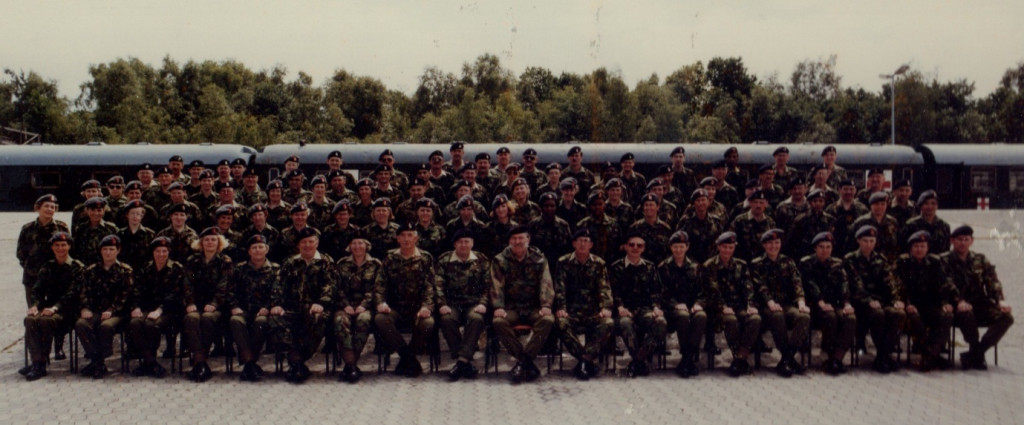
Brian Robertson was Commander of The Ambulance Train Squadron Royal Army Medical Corps (RAMC (V)) (subsequently the Ambulance Train Group) from September 1985 to March 1994. His talk will describe the little known British ambulance train capability that existed throughout the Cold War and includes video footage of British Army Ambulance Trains operating in the British Army on the Rhine from the 1990s. He will also draw on his personal archive of ambulance train material to describe the development of ambulance trains from as far back as the Crimean War.
The last British ambulance trains were based in Germany and based at Munchenglabach and exercised every year on the Deutsche Bahn (DB) network. The crew was made up of a total staff of 242 and included doctors, nurses, combat medical technicians, chefs, railwaymen and an electrician, some of whom will be with us on Saturday.
The trains were never called upon operationally but could have delivered an important link in the casualty evacuation chain across Europe should hostilities have ever broken out.
Brian says:
Staff who served in the Ambulance Train Squadron and subsequently the Ambulance Train Group were the custodians of a very long heritage and tradition of service on Hospital and Ambulance Trains that go back to the South African War. We then kept that flame alive through the Cold War until the disbandment of British Army Ambulance Trains by the Ministry of Defence in 1995.
The NRM exhibition Ambulance Trains focuses on the First World War but ambulance train history is much broader than this period. Early ambulance train design was so effective that it was carried on until the 1990s. Medical staff, although in different uniforms carried out exercises in spaces similar to those that used in the First World War and before.
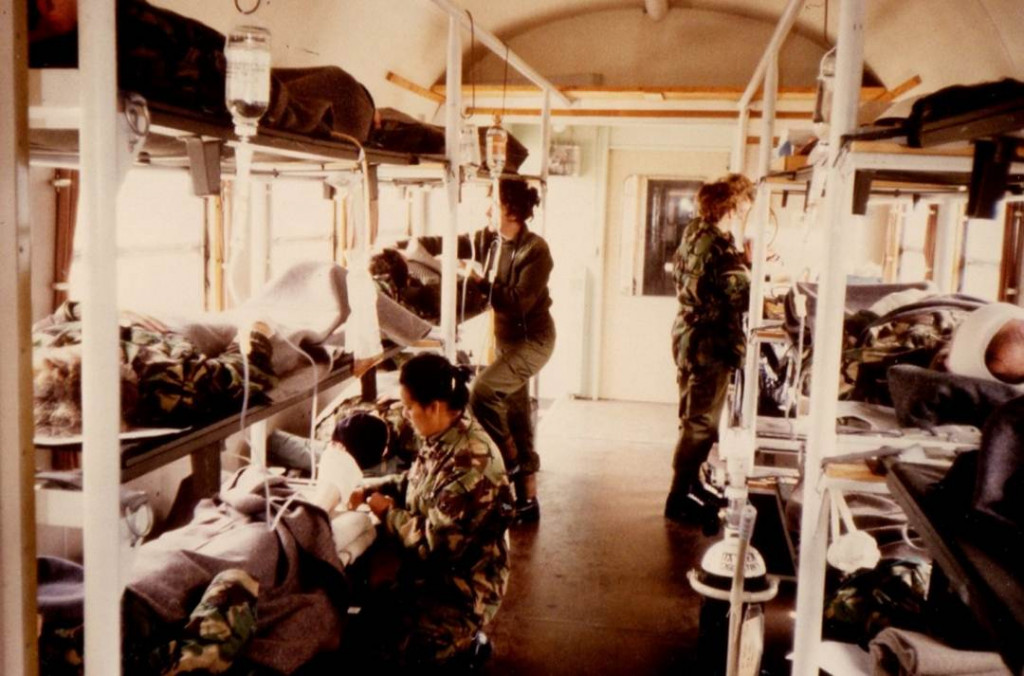
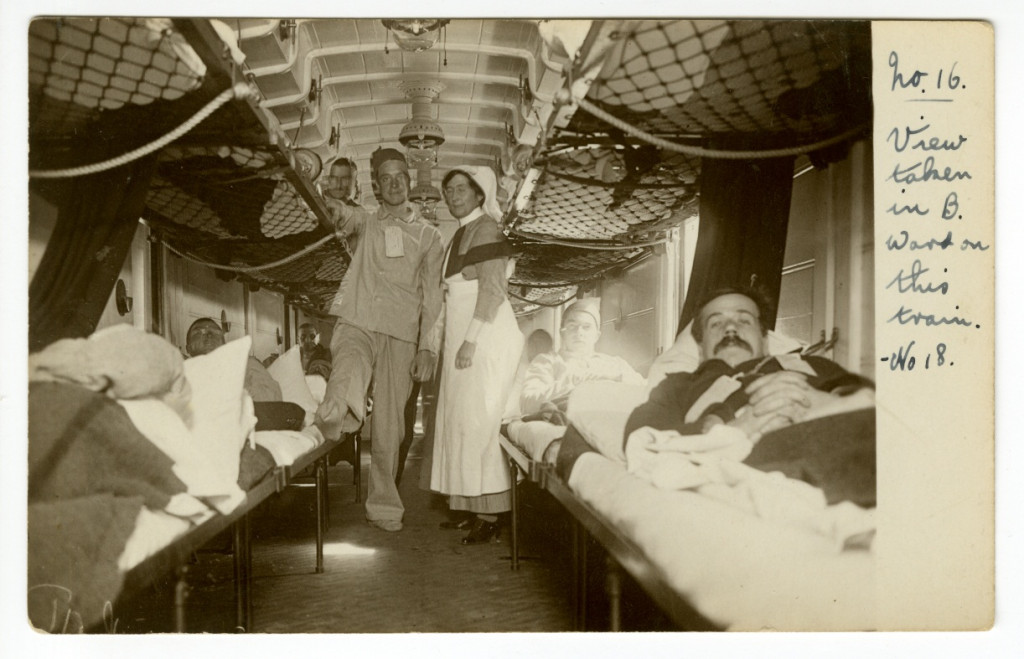
After the end of the Second World War British Army ambulance trains were comprised of German stock. The most recent part of the ambulance train fleet were a number of ex-DB coaches. As you can see, their design does not differ very much from this British Second World War ambulance train.
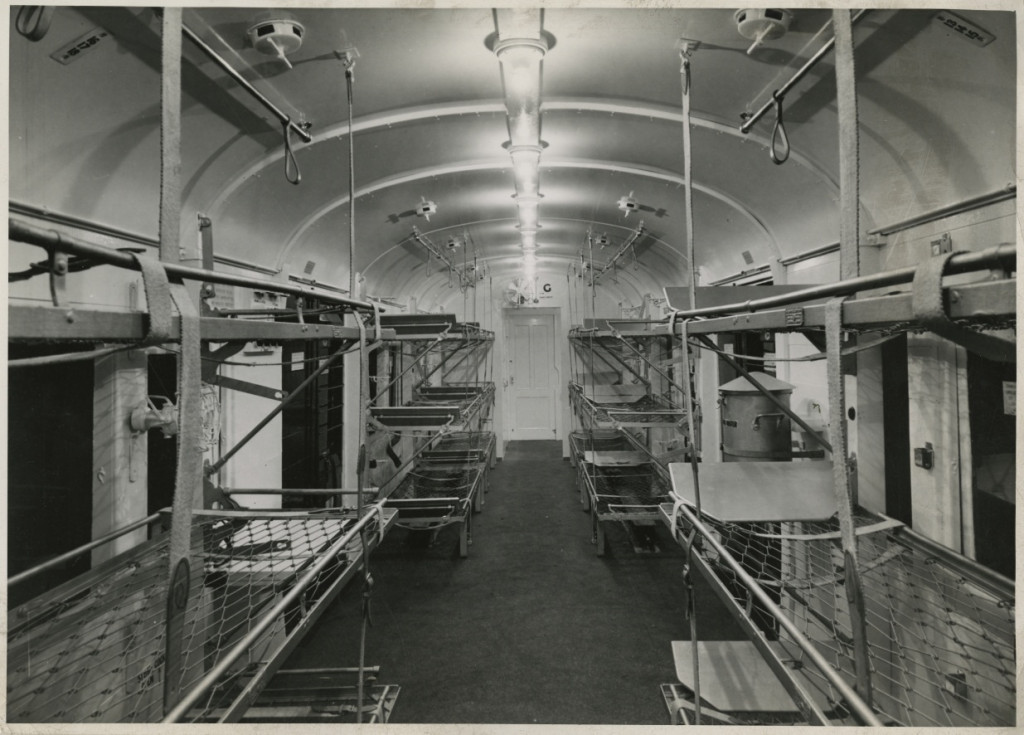
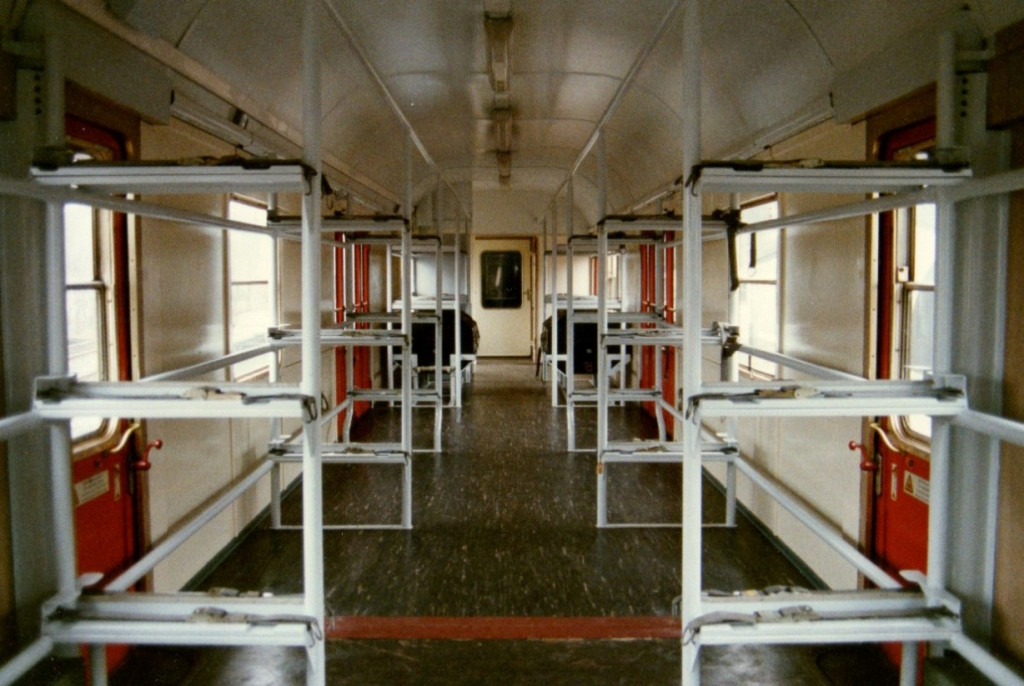
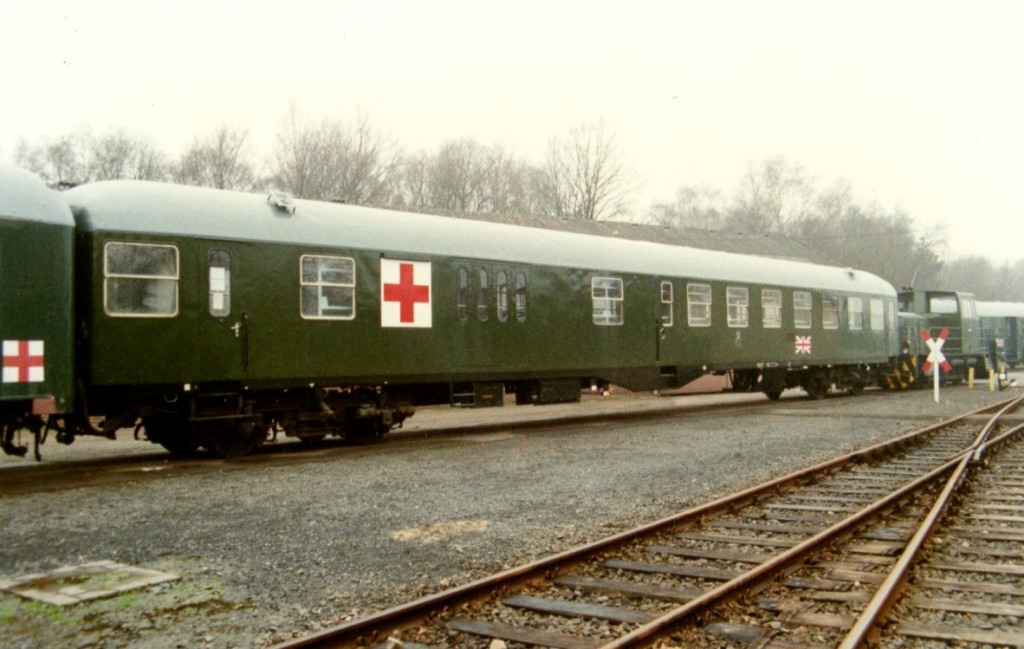
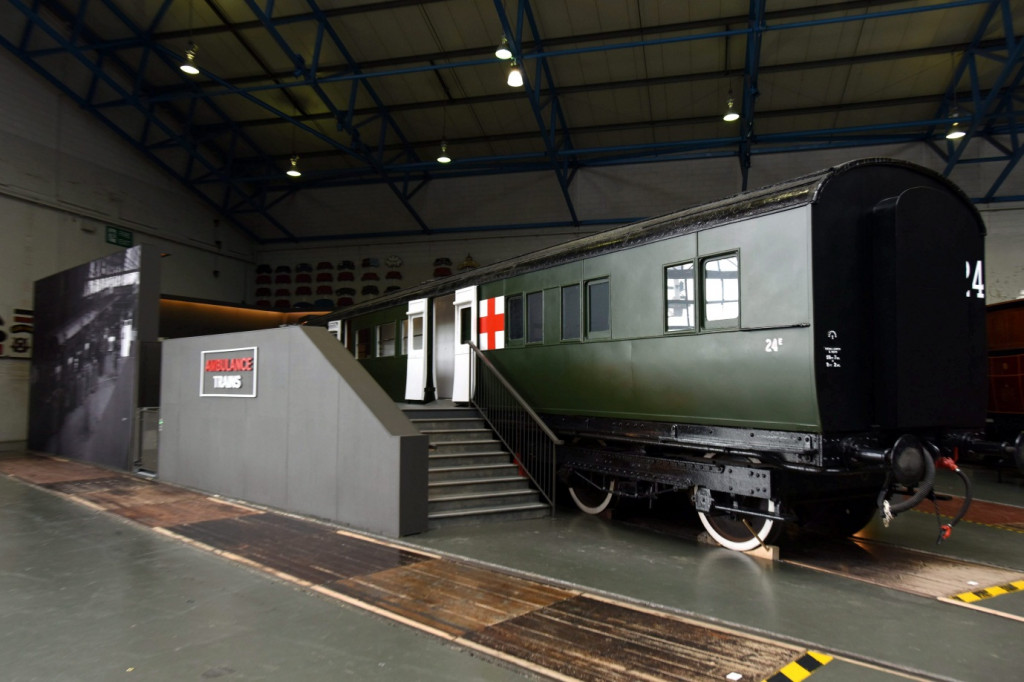
As an ex csm with the ambulance train group I feel that an exhibition of ATG rolling stock is a fabulous idea and whilst I cannot make colonel Robertsons talk as am on holiday,I will try my utmost to visit the NRM whilst the display is on.
Hi Mike – Long time no see! Hope all is well with you, how absolutely fantastic to see this photo .. so many memories and such fun over the years. You probably wont remember me, but then, there are a lot of faces in the picture I can’t put names to. This must have been a really brilliant event. Kind regards.
Hi was woundering if you might recall me Pte R A Boryer
One afternoon in 19429/03 boys aged nearly 14 arrived home from school to find the police had visited their homes.
We were to be up, uniformed and in Basingstoke’s Southern Railway Goods Yard for 01.30 next morning. At that time an ambulance train with 400 soldiers would reverse into the yard and we would have to help unload the train and load the stretchers into waiting ambulances.
I got into the yard before 01.00. There were six or seven old buses in a line. Their backs had been taken off and replaced by canvas sheets like those on military vehicles.
Inside there were no seats. At about knee level were troughed wooden rails to take Furley stretcher runners At about window ledge level was another rail. Hanging from the ceilings were open straps to take stretcher handles.
Half cab vehicles would load 12 stretchers, coach-style vehicles 10.
We had to blanket SJAA F A Manual 38th edition style, all these stretchers and stack them to be loaded into the train.
We were shown the order of loading for each style of vehicle: half cab – lower left front – lower right front – upper left front – upper right front.
Coach – lower left front – upper right front (beside the driver) – then lower left- upper left, as per cab style.
01.30. shunter swinging his lamp as train backs in: shows his red.
Yard’s lights come on: blinding in the blackout.
First vehicle moves to open door of train and stretchers passed in. Vehicle drives to far end of train. Doors open and stretchers being passed out.
Six to eight boys strain to keep stretcher level as it comes off the floor of the train and has to be manhandled into the waiting vehicle with man on it. not strapped to it in any way.
Vehicle loaded. One boy ordered to get in back and ride the 2 1/2 miles or so to EMS Par Prewett.
The driver is driving a 1932 model vehicle, masked headlights, on unknown secondary so not cats’ eyed roads. The few interior light are blue-washed over.
Vehicle arrives at unloading area. Men in striped butchers’ aprons roll canvas up: order boy and driver into kitchen. ‘forced’ to drink pint of hot, sweet cocoa and eat wad of butterd bread and corned beef – as much as our weekly ration for my family of 4.
Right driver! In the back the boys have 10 or 12 stretchers and 2 for each. Must be ready to pass up into train as soon as we stop in the yard.
Boys ride in turn.
Next morning, school: in my case, the only Grammar school boy, haven’t done my homework – detention after school.
We were turned out like this on quite a few occasions.
I am sure we unloaded ex-Japanese prisoners of war before VJ Day.
This was the most horrible experience. We were older, stronger but – even then – 2boys easily lifting what should have been a 13 stone man on his stretcher and loading him into the vehicle on our own. Men being afraid of us because our Cadet uniforms were grey – like the Japanese. Men trying to walk out of the back of the vehicle.
On VJ night we were camping at Gurnard near Cowes on the I.o W. with our Boys Brigade friends from Totton – our respective bandmasters were brothers on VJ night and the locals wanted us to turn out and parade the bands through Cowes at about 0130.
I think we did one or two more trains after that.
John Springer BEM 50 years service medal Officer of the Venerable Order of St John
I have put all my awards. Apart from the 50 year service they honour the men who trained me and all the people with whom I privileged to serve over that time.
I would rather just be addressed as John.
I can only be reached by somebody emailing me so that I can reply without making silly errors on email addresses or [personal information removed – Ed]
Bought back memories of my time with the Ambulance Train
I was with 79 Railway Sqn RCT from 1977-78. An excellent posting and i learnt much about locomotives and running of trains. Our exercise under EX Acrive Edge was to prepare the Ambulance Train. This included putting about a ton of coal in each of coaches ready for the fires to be lit. This never happen and each would be unloaded. A very tiring role as the scullery was at about 5ft in height.
we also went around BOAR to service the Locomotives as well. One of my most interesting postings.
I was a Combat Medical Technician and also in 79 Railway squad in the eighties with the Ambulance Train.
Would like to contact old comrades from either 275 Ambulance Train or 79 Railway Squad.
Been several times ex folding bed, great read, great photos, going to try to share.
My dad was ASM OF 79 railway squadron back in the early 80s where he was tasked with buying new locos and repairing the old carriages. WO1 David Johnson if that rings any bells.
Hello. My father was OC No. 1 Indian Ambulance Train based in Cairo in WW2. Apparently it was a train lent by the Egyptian Government and wa spainted white with large Red Crescents on the roof and sides.
Does anyone have any info on this or other Indian Medical Service operations in North Africa?
I was a Railwayman with 79 Railway Squadron from 1981 until 1983. Best posting I ever had. As a basic railwayman (ie, the guy on the ground) you did all the basic work required to make the railway work. This was everything from mopping the floors of the 48 ambulance coaches – twice. You had to mop all 48 coaches because the “powers that be” had no idea which ones would actually be used on an exercise. You mopped them twice because the first time you would use everyday cleaning products such as “elbow grease” or blood sweat and tears etc. You then did them a second time because there was some sort of “Special” medical cleaner you had to use !!
Aside from keeping the ambulance coaches ready for their 2 or 3 annual exercises, we did all the other stuff to keep the Military Railway running. This quite often meant going to out stations such as Wildenwrath, Bruggen, Gutersloh etc to move things like ammunition or aviation fuel for the RAF. At Monchengladbach we did a lot tank and heavy equipment moves either for the American forces who shared out camp or for the Vehicle Sub Depot (Antwerp) a part of the RAOC who were in North Park barracks across the road from us (known locally as “the other side”) The creme de la creme of jobs though was to go to Berlin and service The Berliner. I went once and was able to experience the magical divided city before we all became the best of friends etc and stopped all the sabre rattling
I spent a fair bit of time in the servicing team doing the basic maintenance of the Locomotives and the rolling stock, an industry I still work in today as the lead tech for the London Overground service. To be honest, when I joined 79 Railway Squadron I had little interest in railways, I was just along for the ride. Today, I wouldn’t work anywhere else
I was an LCpl RE draughtsman at 79 Railway Squadron RCT in 1972-1975ish and after reading some of the posts on their Facebook page, it got me wondering what became of some of the personnel. The OC when I arrived was Major S.C.Thompson and in one year we organised the Rhine Area Motorcycle Trial for Army riders. Major Bagnall took over from Major Thompson. The Chief Clerk was Sgt Frank Scott and WO1 Monty Poyntz – who recently passed away – was the CSM. He was later promoted to Major and spent his life with railways. Whilst I had no interest whatsoever in railways, it was the happiest posting ever for me. I returned many years later when my wife and I brought our young children. So much had changed, the 2IC was a woman, unheard of in my time. 🙂
What loco’s pulled the trains and how many carriages did they have?